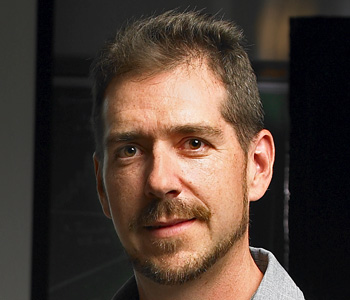Steven Henry Madoff Unseparate Modernism, Interdisciplinary Art, and Network Aesthetics Stanford University Press 292 pages, 6 x 9 inches ISBN 9781503642294
This book began with a question about all the installation art and performance that I was seeing in the early 2000s in New York galleries and museums, wondering where this art came from historically. That led me down a rabbit hole for more than a dozen years, and back in time to 1849 and Richard Wagner’s writing about what he called the Gesamtkunstwerk—the total work of art. After years of research across art history, philosophy, social theory, and network theory, Unseparate: Modernism, Interdisciplinary Art, and Network Aesthetics finally emerged. What I propose in the book is that we need to look again at modernism to understand where contemporary performance and installation art come from, and that a conceptual way to look at this is through the lens of network thinking, or what is called network aesthetics. That’s to say, I wanted to rethink the standard art-historical reading of European modernist art as principally devoted to expressions of fragmentation (think Cubism or Ezra Pound’s Cantos or George Antheil’s composition, the Ballet Mécanique) that were fueled by the traumas of war and reactions to new technologies that were altering their times. Instead, I make the claim that there was always another urge in modernism toward the salutary possibilities of wholeness, of integration in place of fragmentation, which Wagner first proposed, having fled Germany, where his political talks and writing about uniting the country’s principalities into a single nation nearly got him arrested. As an exile in Zurich, he took that political thinking and reframed it as an artistic proposition for an imagined new kind of art—an art unified from disparate parts (dance, music, poetry, drama, and scenography) into something whole, something total.
My book combines history, theory, and prose poems, suggesting that key moments in the annals of modernist art—including Wagner’s music-dramas, the art of Paul Cézanne and Marcel Duchamp, Hugo Ball and the Cabaret Voltaire, and Walter Gropius’s conception of the Bauhaus—are all expressions of proto-networks that joined together different artistic disciplines and ways of thinking into constellated forms. Each of them went about this differently, and the idea of wholeness and totality did not always lead to beneficent forms of connectivity and openness. Sometimes, it became twisted into forms of radical control. But reading backward from our own time of omnipresent connectivity in networked societies to a revised history of modernism helps us to make sense of the past as well as of the present, not only in contemporary interdisciplinary art but also in politics and the structure of society.
Network theory is described in the structural relationship of things quite familiar to all of us now, as terms we hear all the time: hubs, nodes, dropped signals, latency, software protocols, “handshakes” between data transmissions, etc. We all carry sleek digital devices in our pockets that offer instant and endless connection. If, as citizens of the twenty-first century, we’re to make what I’ll call living sense of the art made a century ago—the classic modernist art of modernism—it’s useful to see it in relation to our present, even if this is anachronistic. After all, culture has changed, and how we live and think now, how we experience time and spatial relationships in the age of the internet, is profoundly different. So, what was understood as an art about things broken down into fragments can also be seen as distinct parts in linked structures. This investigation of modernism shows that the nascent idea of linkages, of what I call proto-networks, is there in the art and in the ways in which artists perceived and expressed what was happening to them in the world and what the world could look like through their art as a form of revision. I try to give highly specific examples in Unseparate of such works of art and the writing these artists did in essays, letters, diaries, and manifestos to establish the idea of network aesthetics as a way to read this counter-strand in modernism, away from fragmentation and ultimately toward works that ascribe to varied notions of networked wholes that are the basis of a great deal of art today, with its tendency in many artists’ practices to join artistic disciplines together in unified interdisciplinary works.
There are key quotes in the book that signal this idea of radical unity. For example, even though you might not think about Paul Cézanne’s paintings in terms of the idea of a network per se, he makes a fascinating remark to his friend Joachim Gasquet,
“The landscape thinks itself in me and I am its consciousness.”
Cézanne imagines his body as quite literally melded to the natural world, joined with it in a primal form of connection. He expresses this aspiration, for example, in The Large Bather, on view at the Museum of Modern Art in New York: a body whose outlines and flesh take on the colors and formations found in the landscape, bound together in ways quite unique to his vision, in which the network of very different elements are linked through hue, torqued angles, and fusions of forms. Or, in an entirely different way, Walter Gropius, the founder of the Bauhaus—the art school that is still the model for countless institutions across the world more than one hundred years after its founding in Weimar, Germany, in 1919—proclaimed that his new school would be a
“crystalline expression in a great Gesamtkunstwerk. And this great total work of art, this cathedral of the future, will then shine with its abundance of light into the smallest objects of everyday life.”
In each of the book’s chapters about these monumental figures in the history of modernism, there are these moments of decisive declaration. We read and see instances of this powerful yearning for something that makes the world cohere, that redresses the traumas of their times, personal and societal, through extraordinary insights and creativity.
I’ve tried to lay out this history as a bulwark, in some ways, against the divisiveness of our own societal challenges, of the aggressions and political upheavals we all face now, and the alienation that these upheavals (including technological ones) are causing. If we can learn from the past that there isn’t only fragmentation in our lives, despite wars, authoritarianism, and the negatives of technology, but also in light of the potential to connect, to unify, to imagine wholeness, then what interdisciplinary art represents is a model for tolerance among differences of every kind. Between the historical chapters of the book, I’ve included prose poems I’ve written about each of the senses, as the fact of installation art and performance art is that they take place in space, and what is so engaging about these forms of expression is the way they palpably engage the senses. These works attempt to integrate the audience into them, creating a network of material and sensual connections. It seemed to me that the best way to integrate the idea of integration into the book was through very personal accounts of the senses. And further to this, I include a chapter devoted to philosophies and theories about space—specifically about the way our bodily experience of space shapes our sense of self in the world and how we negotiate space individually and as societies. It’s a dense book, I know, but I hope that seeing modernism through contemporary eyes, through this notion of network aesthetics, is useful to scholars, students, and artists who might gain something for their own practices through this understanding of modernism, as well as to cultural theorists and to philosophers engaged with art past and present.




We don't put paywalls. We don't distract you with ads. We don't sell your data.
Please help to keep this running!